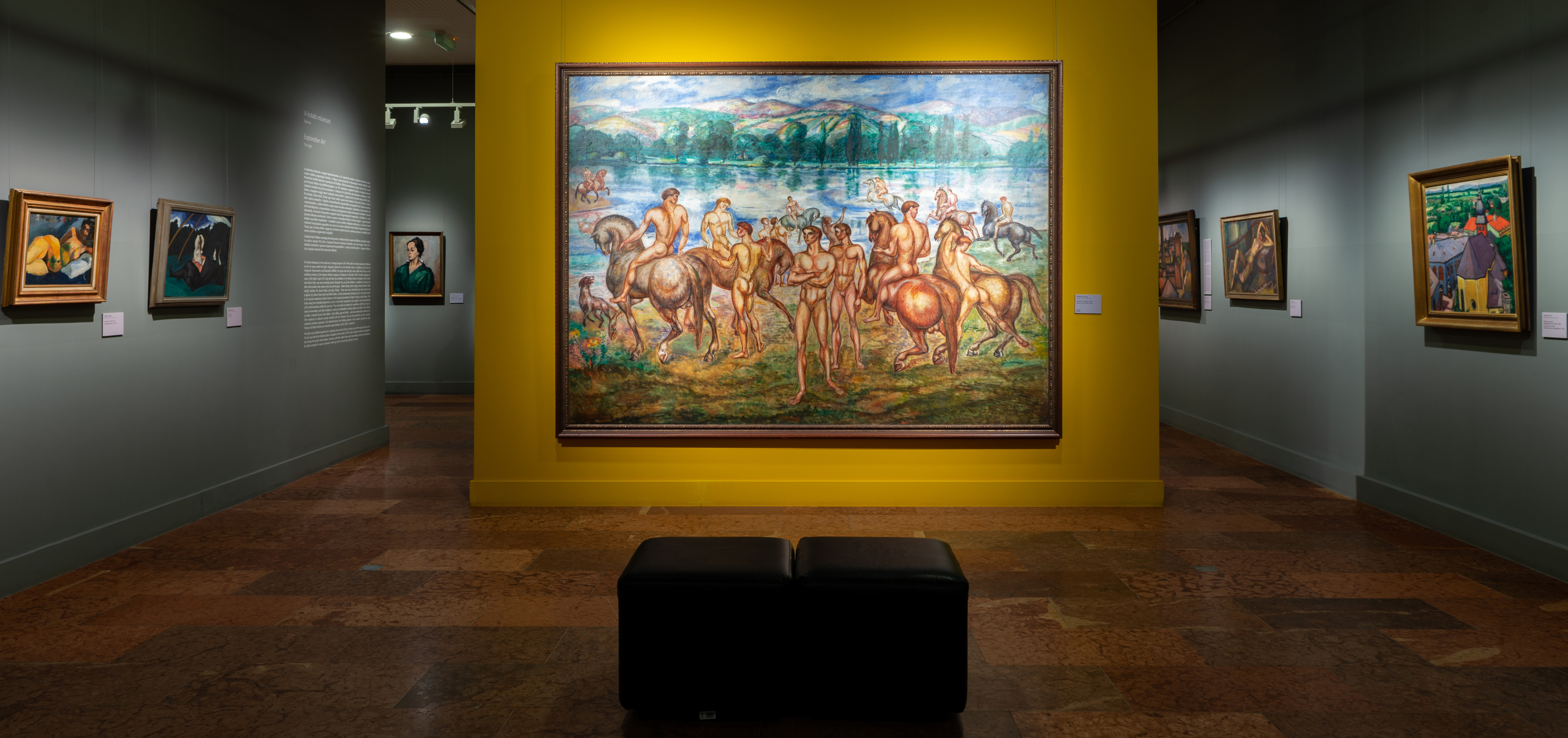Post-Impressionists, the "Neos" and the MIÉNK Group
The first decade of the twentieth century marked a breakthrough in the history of modern Hungarian art. 1906 saw the emergence of the second generation of the artists' colony in Nagybánya (Baia Mare), whose members had direct experience of the latest happenings in Paris. Béla Czóbel and his associates were regular participants in exhibitions in the French capital, while Vilmos Perlrott-Csaba studied under Henri Matisse himself. Works by Sándor Ziffer, Sándor Galimberti and Lajos Tihanyi all featured well-known motifs from Nagybánya and its surroundings, but their paintings, built up from patches of intensive colour delineated by strong contours, now reflected the influence of the French Fauvists. The exponents of this novel style in Hungary were known as the "Neos" (short for neo-impressionists).
From around the turn of the century, members of the previous generation held independent exhibitions to promote acceptance of the new directions in art. The first resounding success was achieved by the one-man show held by Josef Rippl-Rónai in 1906. He had returned home from Paris to resettle in the town of his birth, Kaposvar, where he painted scenes of country life, atmospheric interiors, and the ordinary events of his family. His pictures became ever more colourful, and were made up of tiny dots of pigment, in a manner which Rippl-Rónai himself described as the "corn style". In autumn 1907, the Circle of Hungarian Impressionists and Naturalists (NIIÉNK) was formed, led by Pal Szinyei Merse, Károly Ferenczy and József Rippl-Rónai, and bringing together artists who were involved in the modernist movements. The organisation's mission was to arrange group exhibitions that would provide opportunities for members and invited artists - mostly young “Neos" to present their works to the public. The founding members included artists from the colonies in Nagybánya (István Csók) and Szolnok (Adolf Fényes). Both of them were concerned with current issues in painting; Adolf Fényes's richly factured genre pieces and meticulously structured still life were handled with bright tones and radiant colouring, while István Csók used vivid combinations of colour to record his ethnic folk subjects.
 Modern Times
Modern Times
